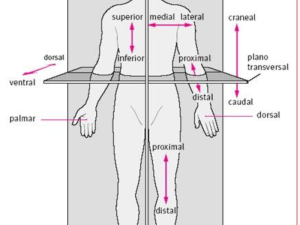[ez-toc]
Introduction
A physical therapist is a skilled healthcare professional who helps patients restore movement, manage pain, and improve their physical health. Whether recovering from surgery, injury, or chronic pain, physical therapy plays a crucial role in helping individuals regain independence. Through advanced rehabilitation techniques and manual therapy, therapists design personalized treatment plans that address each patient’s unique needs.
Unlike standard medical care, physical therapy focuses on the body’s natural healing process through movement, exercise, and therapeutic massage. A Doctor of Physical Therapy (DPT) uses evidence-based approaches to improve flexibility, strength, and endurance. Moreover, physical therapists also educate patients on posture, injury prevention, and lifestyle modifications to ensure long-term well-being.
In today’s fast-paced world, where injuries and sedentary lifestyles are common, manual therapy and customized physical therapy sessions have become essential for recovery and performance. With a combination of hands-on care, modern technology, and clinical expertise, physical therapists help patients live pain-free and active lives.

What Is Physical Therapy and How Does It Work?
Physical therapy is a healthcare service designed to restore physical function and reduce pain. It includes exercises, stretching, and manual therapy techniques that enhance mobility and promote healing. Physical therapists use detailed assessments to understand each patient’s physical condition. Then, they create personalized treatment programs targeting specific muscles and joints.
A major part of physical therapy is patient education. Therapists teach individuals how to perform exercises safely, maintain correct posture, and prevent future injuries. Using methods like therapeutic massage and electrical stimulation, they relieve muscle tension and improve blood circulation. Over time, consistent therapy sessions lead to stronger muscles, better flexibility, and faster recovery.
The Importance of Manual Therapy in Physical Rehabilitation
Manual therapy is a cornerstone of modern physical therapy. It involves hands-on techniques such as joint mobilization, muscle stretching, and soft tissue manipulation. These methods help reduce pain, restore mobility, and enhance joint flexibility. A professional healthcare provider skilled in manual therapy can detect muscle tightness, joint stiffness, and movement limitations.
By applying targeted pressure, manual therapy promotes relaxation and increases blood flow, which accelerates tissue healing. This form of therapy is especially effective for patients with back pain, neck stiffness, or post-surgical recovery needs. When combined with exercise therapy and therapeutic massage, manual therapy delivers comprehensive physical healing.
Patients often feel immediate relief after sessions, experiencing less stiffness and greater freedom of movement. Therefore, manual therapy remains an essential part of every Doctor of Physical Therapy (DPT) treatment plan.

The Role of a Doctor of Physical Therapy (DPT)
A Doctor of Physical Therapy (DPT) is a highly trained healthcare professional with expertise in diagnosing and treating physical impairments. They undergo extensive education and clinical practice to develop the skills needed for patient-centered care. A DPT evaluates movement patterns, identifies dysfunctions, and prescribes appropriate interventions.
The Doctor of Physical Therapy (DPT) degree equips professionals to use evidence-based methods to promote mobility and prevent disability. They collaborate with physicians and other healthcare providers to ensure complete patient recovery. In addition, DPTs emphasize preventive care by guiding patients through posture correction, ergonomic adjustments, and lifestyle management.
Through a mix of manual therapy, exercise science, and therapeutic massage, DPTs empower patients to regain their strength and confidence. Their holistic approach makes them vital contributors to modern rehabilitation and wellness programs.
Therapeutic Massage and Its Benefits in Physical Therapy
Therapeutic massage is an essential part of physical therapy, offering both relaxation and medical benefits. It helps relieve muscle soreness, improve flexibility, and boost overall circulation. When performed by a skilled healthcare professional, massage therapy complements other rehabilitation methods by reducing stress and enhancing muscle recovery.
During therapeutic massage, the physical therapist applies specific pressure and techniques to targeted muscle groups. This process promotes relaxation and helps remove toxins from tissues. Patients who undergo regular massage therapy experience reduced stiffness and improved posture.
Incorporating massage into a rehabilitation plan also speeds up healing after surgery or sports injuries. Combined with manual therapy and exercise-based techniques, it provides a balanced and holistic approach to wellness. For many, therapeutic massage becomes a cornerstone of pain management and long-term mobility.

Why Physical Therapy Is Essential for Long-Term Health
Physical therapy offers far more than temporary relief; it builds a foundation for long-term health and strength. Regular sessions enhance muscle coordination, improve balance, and prevent re-injury. For patients dealing with arthritis, joint pain, or neurological disorders, physical therapy provides a safe, non-invasive solution.
By integrating manual therapy, customized exercise, and therapeutic massage, therapists address both the cause and symptoms of pain. They help individuals maintain flexibility, increase stamina, and return to normal activities without discomfort.
Moreover, the guidance of a Doctor of Physical Therapy (DPT) ensures evidence-based care tailored to each patient’s condition. With a focus on education and empowerment, physical therapy encourages patients to take control of their recovery journey. As a result, they enjoy a more active, independent, and healthier life.
Conclusion:
Choosing a physical therapist is the first step toward a healthier and more active lifestyle. These healthcare professionals are dedicated to improving physical function and enhancing quality of life. Whether you need rehabilitation after surgery, injury recovery, or pain management, physical therapy offers personalized care that works.
Through manual therapy, structured exercises, and therapeutic massage, therapists create treatment plans that deliver long-lasting results. A qualified Doctor of Physical Therapy (DPT) combines knowledge, empathy, and skill to guide patients toward full recovery.
Investing in physical therapy means investing in your body’s strength and mobility. Over time, you’ll notice reduced pain, improved endurance, and greater flexibility. With professional guidance and consistent effort, the road to recovery becomes smoother and more effective. Physical therapy truly is the science of healing through movement and care.
And if you are intrested in this job then click here https://jobonlineapply.com/
